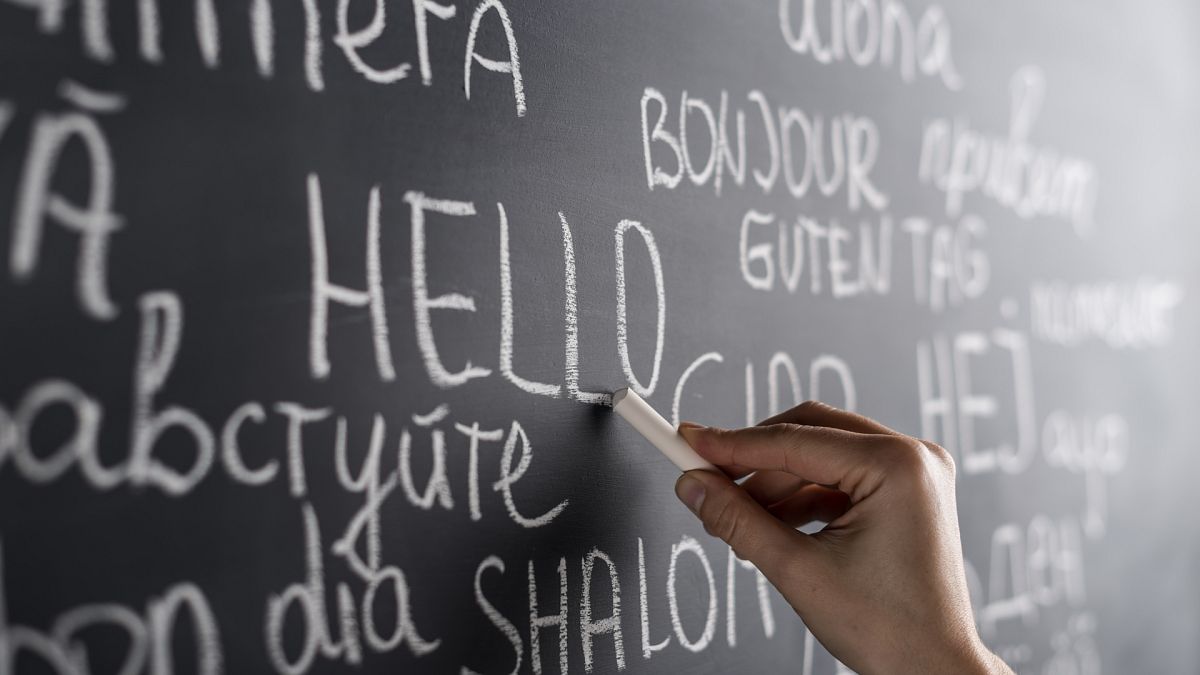Part of what makes Europe such a bountiful well of cultures is its linguistic diversity. The annual European Day of Languages celebrates it.
Today is the 23rd anniversary of the European Day of Languages. First celebrated on 26 September 2001, the Council of Europe initiative highlights the importance of preserving linguistic diversity across the continent.
Across Europe, there are more than 225 indigenous languages alongside the huge number of non-European languages that have arrived in the continent through migration.
Lithuanian President Gitanas Nausėda, acting president of the Committee of Ministers of the Council of Europe released a statement to recognise the day. In it, he quotes the 16th century humanist Catholic priest Mikalojus Daukša, who published the first books in Lithuanian.
“It is not by the fertility of the land, nor by the diversity of the clothes, nor by the beauty of the country, nor by the strength of the cities and castles that nations live, but mainly by preserving and using their language, which increases and preserves unity, harmony and brotherly love. Language is the common bond of love, the mother of unity, the father of citizenship, the guardian of the state,” Daukša wrote in 1599.
Nausėda says that Daukša embodied the best of Europe’s approach to language: “Linguistic diversity, from which a remarkable cultural diversity springs, is the foundation of today’s Europe. We are unique because we pay attention to each language, to its preservation, to its dissemination in the public sphere. Respect for all languages, even the smallest ones, ensures our communion and keeps alive the project of European unity, as today’s events across Europe show.”
As part of European Day of Languages, the Council of Europe has launched a selection of initiatives to promote the broad spectrum of languages across the continent and their use to bridge cultures.
The first is the Languages for Peace initiative where they’ve asked people to submit posters on the theme of “unity and understanding across different languages”. Prizes will be awarded to the top five entries and the top 30 will be displayed at the European Centre for Modern Languages.
The second is a call-out for people to submit examples of the most difficult letter/word/phrase to pronounce in a European language.
Some of the examples they give are real tongue twisters. “Cabeleireiro” the Portuguese word for “hairstylist” is supposedly a mouthful because the similarly sounding “lei” and “rei” are next to each other. “Następstw”, the Polish word for “consequence”, has a similar issue with its four clustered consonants.
Even native French speakers sometimes will trip up over pronouncing “serrurerie” (locksmith), while the simple number 555 presents difficulties when said out loud in German as “Fünfhundertfünfundfünfzig”.
One of the first Dutch tongue-twisters language learners are taught is the phrase “88 beautiful canals”. It’s both relevant to the Netherlands’ environment and plays into the language’s penchant for a guttural “g” sound: “Achtentachtig prachtige grachten”.
Some fun facts about Europe’s languages
Over half of Europe is bilingual. In general, people in the Nordic countries excel the most at speaking more languages than their mother tongue, while southern Europeans lag behind. Unsurprisingly, the UK is pretty low down the list.
The vast majority of European languages come in some way from an Indo-Germanic ancestor that likely existed around the Caspian Sea area around 5,000 years ago.
Basque (or Euskara) is believed to be the oldest of the European indigenous languages. Spoken in the Pyrenees region of France and Spain, Basque is a language isolate, meaning it doesn’t originate from another currently spoken language.
It’s thought to be the last remaining pre-Indo-European language in western Europe. It’s believed to originate from Aquitanian, and predates the spread of Latin throughout the region.
After Basque, the oldest spoken Indo-European language is Lithuanian, which has many similarities with ancient Sanskrit, the sacred language of Hinduism.
Although most indigenous European languages are in the Indo-European language family, Maltese is a rare exception. Somewhat unsurprisingly due to its proximity to the Middle East, Maltese is only European language in the Afro-Asiatic family, which includes Arabic and Hebrew.

